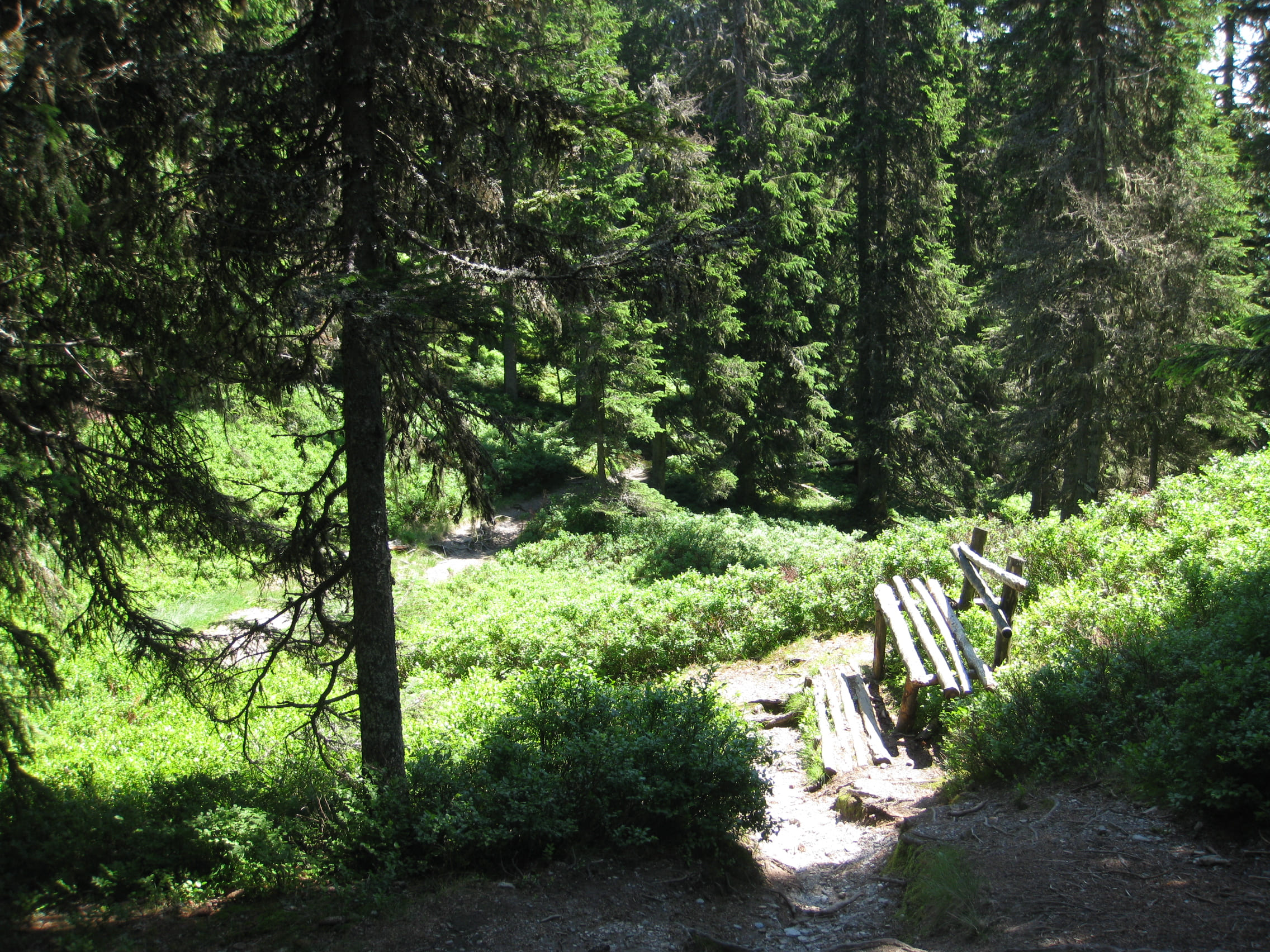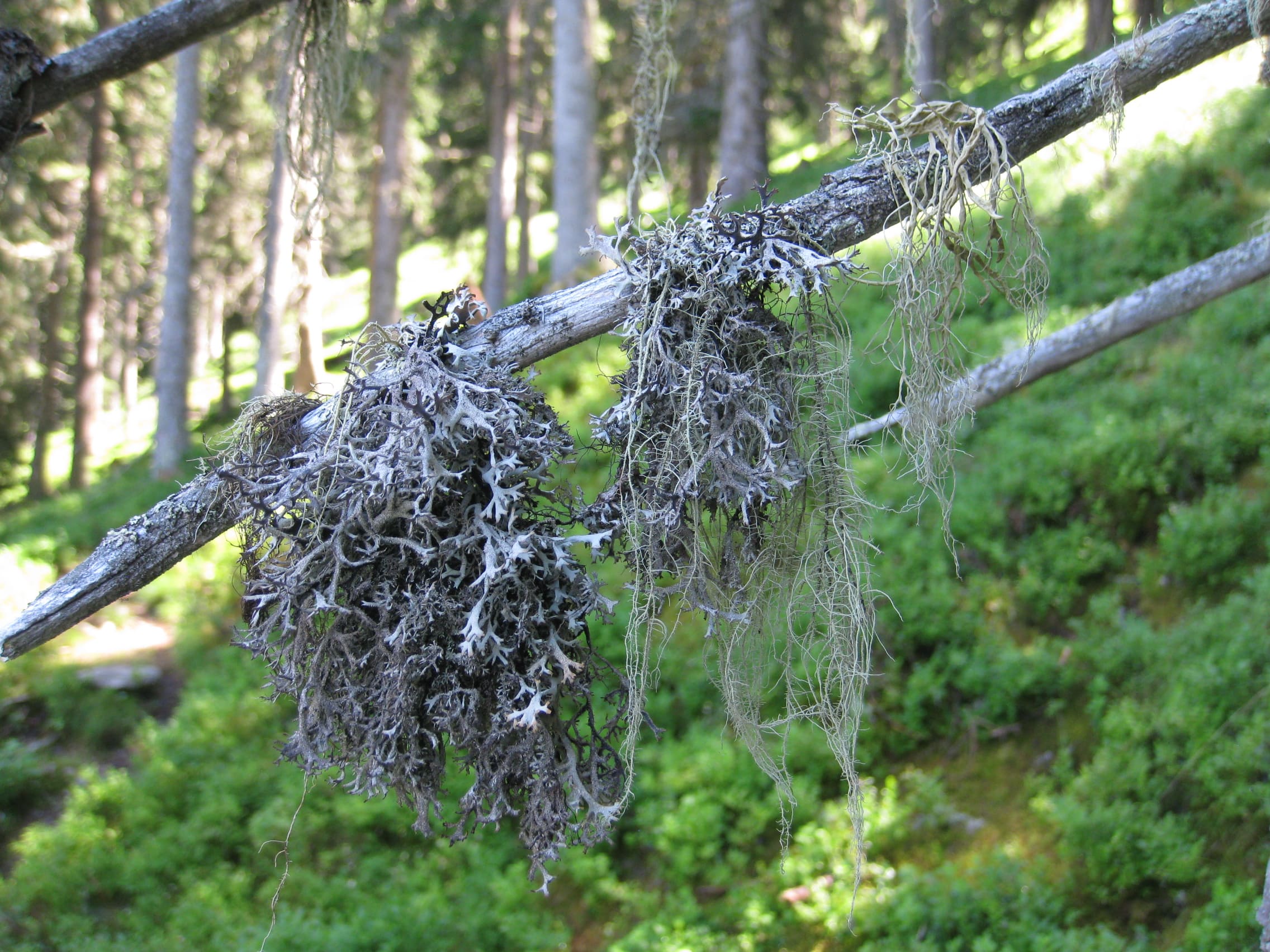Hochgründeck - Hofer Saddle
Two main paths to the Hochgründeck mountain (1,827 m) meet at the Hofersattel (1,635 m). One leads here from Bischofshofen via Oberberg, the Hörndl Chapel and the Josef-Bründl; the other begins in Hüttau, runs along the Iglsbach Valley and begins to climb at the Gasthaus Klamm Inn. From there, it goes uphill through the "magic forest" (coniferous trees with long beard lichen on their branches). The two paths to the Hochgründeck mountain and the Heinrich-Kiener Haus meet at the Hofersattel.
The dominant rock in the Hofersattel area is the gray, phyllitic slate dating from the Lower Ordovician to Devonian (400-450 million years ago). These Palaeozoic phyllites tend either toward spontaneous settling or rather to slow mass movements, so-called creep movements.
These are gravitational movements of a few millimeters per year. You can find several submerged masses below the Hofersattel. Creep movements can be located where sickle or saber trees are found. While the slope slowly slides downwards, taking the tree with it and tilting it, the tree struggles to upright again and again.
Kids
Ski jumping in Bischofshofen
Bischofshofen is home to a very famous ski jumping hill, the Paul-Außerleitner-Schanze. Every year there is a big event where the best ski jumpers in the world jump on four different hills. This event is called the Four Hills Tournament. It takes place in two cities in Germany, namely Oberstdorf and Garmisch-Partenkirchen, and in two cities in Austria, namely Innsbruck and Bischofshofen.
The ski jump in Bischofshofen takes its name from a ski jumper called Paul Außerleitner. He had an accident on this ski jump and unfortunately died. The ski jump used to be called "Hochkönigschanze", but then it was renamed to commemorate Paul Außerleitner.
The ski jump in Bischofshofen is very high, namely 132.5 metres. The longest jump ever made there is 145 metres long! This record was set by ski jumper Dawid Kubacki in 2019. The Four Hills Tournament is very exciting for many people because they want to see which ski jumper can jump the furthest and best.
Ski jumping in Bischofshofen
There is an important sight in Bischofshofen, namely a ski jump. This ski jump is called Paul-Außerleitner Schanze. Do you know the Four Hills Tournament?
This is a ski jumping World Cup event in which competitions are held on four ski jumps in Oberstdorf and Garmisch-Partenkirschen (Germany) and in Innsbruck and Bischofshofen, where the best ski jumpers compete every year.
The Paul Außerleitner ski jump takes its name from a ski jumper who died in an accident on the hill. It used to be called "Hochkönigschanze"
The Paul-Außerleitner ski jump has a total height of 132.5 metres. The current hill record is 145.0 metres, which was set by Dawid Kubacki in 2019.
Ski jumping in Bischofshofen
The Sepp (Buwi) Bradl Stadium with its 3 ski jumps is world-famous for hosting the annual final of the Four Hills Tournament. The Four Hills Tournament is a ski jumping World Cup event in which competitions are held on four ski jumps in Oberstdorf and Garmisch-Partenkirschen (Germany) and in Innsbruck and Bischofshofen, where the best ski jumpers compete every year.
The stadium was named after Sepp (Buwi) Bradl, the greatest jumper in the history of the Bischofshofen Ski Club.
The ski jump was built in 1947 as the "Hochkönigschanze". The first major event was the qualifying competition for the 1948 Winter Olympics in St. Moritz SUI. Due to a tragic training fall by Paul Außerleitner (05.01.1952), who died of his serious injuries three days later, Hochkönigsschanze was renamed Paul Außerleitner Schanze.
In 2004, the ski jump was completely renovated and enlarged and covered with plastic mattings for summer use. Today, Bischofshofen is an important training centre and teams from all over the world can often be seen training up close in the summer.
With a total height of 132.5 metres, the ski jump is impressive. The current hill record of 145.0 metres, set by Dawid Kubacki in 2019, shows the high standard of the competitions in Bischofshofen. The Four Hills Tournament is a highlight in the ski jumping calendar and captivates both athletes and fans every year.



